we celebrate our 500th Sidetracks and Detours post with TWO GUN TEX FROM TEXAS
we celebrate our 500th Sidetracks and Detours post with
TWO GUN TEX FROM TEXAS
by Norman Warwick.
Are you sitting comfortably? Then we shall begin.
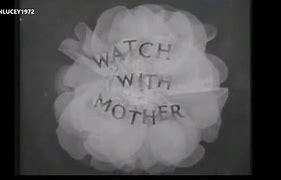
The above line was the courteous opening greeting of Watch With Mother, the catch all title of five separate programmes, shown as one per day on the BBC for pre-school children throughout the week.
On a Monday I would sit down with my mother and younger brother Graham to watch Picture Book. The idea behind Picture Book was to encourage children to make things., while mum looked on and helped them. Any one of my age will recall the catchphrase of Picture Book’s first presenter Patricia Driscoll: “Do you think you could do this? – I am sure you could if you tried.”
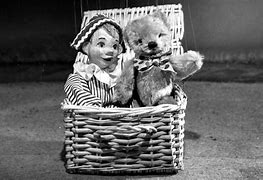
Now a senior citizen – he was ‘born’ in 1950 – Andy Pandy, (right with Teddy), lived in a picnic basket with Teddy and Looby Loo. He was something of a highly strung puppet but always playeul and friendly. These Watch With Mother programmes were screened live every day, though when tiit dawned on the Beeb that if filmed they could be repeated over again at little cost, 26 episodes were filmed for that very purpose. My mate Andy was a comic strip character for many years to, but as he and hos two buddies frew into adulthood rumours arose, reported by Rochdale writer Rod Bloom, that the three were accomplices in a travelling card game con !
Maybe that rumour was all bolobbedy blob of the kind spoken by Bill And Ben The Flowerpot Men. Their programme on a Wednesday had me sitting in the garden all weekend to listen out for the talking flowerpots or even to hear a squeal from Little Weed as she ran away from dad´s lawn mower.
On A Thursday I would enjoy the adventures of Rag (the hedehjog), Tag, (the mouse) and Bobtail (the rabbit). These very gentle adventures all took place in the garden of their countryside home, and there were five baby rabbits who turned up pretty frequently too. Only 24 programmes were made it seems, and each was only 12 minutes long, yet the stories of these three very simply designed glove puppets are seared in my memory.

Friday brought a glimpse of idyllic family life down on the farm, through the eyes of The Woodentops (right). This famous family of TV puppets consisted of Daddy Woodentop, Mummy Woodentop, twins Jenny and Willy Woodentop, Baby Woodentop and not forgetting Spotty Dog, introduced by the narrator as “the very biggest spotty dog you ever did see”.
Mummy Woodentop was often helped by friend Mrs Scrubbitt, whose husband Sam Scrubbitt would also help Daddy Woodentop tend to the animals, including Buttercup the Cow. The Woodentops started in 1955 and ran for many years.
Of course, we all have to grow up sooner or later, and before I knew it I could only watch the programmes aimed at schoolchildren. Some, such as How, were very worthy and sometimes now I even wish I had watched them, but I was lured away by Torchy (Torchy) The Battery Boy and developed a life-long love of Western films by becoming addicted to stories from the dusty little town of Four Feather Falls. It was here, too, I would develop my love of cowboy songs such as Rawhide and El Paso, that would take me all the way to using Guy Clark´s The Last Gunfighter Ballad as a topic of classroom discussion when delivering creative writing sessions as a peripatetic Artist In School.

Four Feather Falls was the third puppet TV show produced by Gerry Anderson for Granada Television (now both ITV Studios and ITV plc respectively). It was based on an idea by Barry Gray, who also wrote the show’s music.[1] The series was the first to use an early version of Anderson’s Supermarionation puppetry. Thirty-nine 13-minute episodes were produced, broadcast by Granada from February until November 1960. The setting is the late 19th-century fictional Kansas town of Four Feather Falls, where the hero of the series, Tex Tucker, is a sheriff. The four feathers of the title refers to four magical feathers given to Tex by the Indian chief Kalamakooya as a reward for saving his grandson. One of the feathers allowed Tex’s guns to swivel and fire without being touched whenever he was in danger, two conferred the power of speech on Tex’s horse and dog, and the fourth feather could summon Kalamakooya.
The series was sporadically repeated on British television until 1968, and was released on DVD in 2005.
American Western television shows such as Wagon Train and Gunsmoke were popular with British audiences, therefore Gerry Anderson and his business partner Arthur Provis decided to make a cowboy series, based on an idea offered to them by Barry Gray. Anderson considered the puppets with static heads, made by Christine Glanville for his earlier productions, to be unacceptable because the viewer could not tell which character was talking unless its puppet moved up or down. Anderson’s aim was to make the puppets look as realistic as possible, the beginning of the Supermarionation puppetry process, although that term was not coined until his next series, Supercar, another great kids´programme loved by me and by all my mates.
The puppets’ papier-mâché heads were replaced by interchangeable hollow fibre glass heads with internal rods that could move the eyes from side to side. The heads also contained sound-activated solenoids, which allowed the puppets’ lips to move automatically in synchronisation with the dialogue. The electronics of the day required more space than would be available in a human-scale head, therefore all the puppets in Four Feather Falls had oversized heads.
Except for the pilot episode, which was made in AP Films‘ studios at Islet Park, the series was produced in a converted warehouse in the Slough Trading Estate. The cast assembled to record each script without seeing the puppets, much like recording a radio series; synchronisation of each character’s speech with the movement of its puppet’s mouth was performed later. The show was filmed in black and white. Its tight budget precluded the use of sophisticated special effects, and less-costly alternatives were used. For example, to achieve the effect of muzzle flashes, small specks of black paint were carefully applied to the 35 mm negatives so they would appear as white flashes on the finished prints. The wires used to control the puppets were eight feet long and made of tungsten, an improvement on the curtain wire used in the two earlier series, and were only 1/200 of an inch thick. Being shiny, the wires had to be blackened. The puppets were made one-third life size with the puppeteers on a bridge eight feet above the set. The horses moved by being pulled along on a trolley, which meant the viewer never saw their feet when they were moving.
Continuity for the series was provided by Sylvia Thamm who married Gerry Anderson.
All that technological wizardry interested me then not one jot and, in fact, interests me little more now, sixty years later. Instead I remain more interested in the characters and the tales they had to tell and the story those tales pulled together.
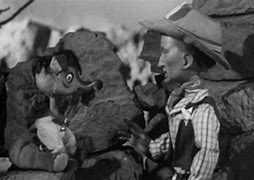
The series was set in the fictitious late 19th-century Western town of Four Feather Falls, Kansas, and featured the adventures of its sheriff, Tex Tucker (left). In the first episode, Grandpa Twink related the story of how it all began to his grandson, Little Jake. Tex was once riding up from the valley and came across a lost and hungry Indian boy, Makooya, and saveg him. Tex was given four magic feathers by the boy’s grandfather, Chief Kalamakooya, as a reward for saving his grandson. Two of the feathers allowed his guns to swivel and fire automatically (often while Tex’s hands are raised), and the other two allowed his horse, Rocky, and his dog, Dusty, to speak. As Tex, his horse, and dog are very thirsty, Kalamakooya also makes a waterfall where there had been no water before, and so when the town was built it was named after Tex’s feathers and the waterfall.
The characters of the town were Grandpa Twink, who did little but rest in a chair; his grandson Little Jake, the only child in town; Ma Jones, who ran the town store; Doc Haggerty; Slim Jim, the bartender of the Denison saloon; Marvin Jackson, the bank manager; and Dan Morse, the telegraphist. Other characters appeared from time to time for only one episode, often just visiting town. The villains included Pedro, who was introduced in the first show and Fernando, who first appeared in the second episode as a sidekick and someone Pedro could blame when things went wrong, as they always did. Big Ben was another villain who appeared from time to time, as did Red Scalp, a renegade Indian. Other villains only appeared in single episodes.

Until researching the details for this article I would never have guessed the links between Four Feather Falls and the later present of Just A Minute and host of The Sale of The Century, but was nevertheless amazed and somehow delighted to learn that Nicholas Parsons was the speaking voice of the puppets Sheriff Tex Tucker and Telegraph Operator, Dan Morse. As previously mentioned the Sheriff´s singing voice belonged to Michael Holliday with many of the minor characters voiced by Kenneth Connor, who ´carried on´ to have great comedy film career.
Denise Bryer had worked with Gerry Anderson on The Adventures of Twizzle, (oh wow, its all coming back to me now. That was another programme that distracted from reading the weekly Look And Learn educational magazine dad had ordered for me). and he wanted her to play some of the voices in Four Feather Falls. Anderson visited Bryer at her home with some scripts and asked her husband, Nicholas Parsons, to help by reading some of the other parts, including the sheriff Tex Tucker. Anderson liked Parsons’ interpretation and offered him the job of providing Tex’s speaking voice.
The show’s music and song lyrics were composed by Barry Gray, with Tommy Reilly performing the harmonica pieces. The best known song to come out of the series was Four Feather Falls, sung in some episodes by Michael Holliday in the style of Bing Crosby and sometimes incorrectly described as the theme song to the series. The closing theme song was Two Gun Tex of Texas. Holliday was paid £2000 for his singing work on the pilot episode, equivalent to about £38,000[5][b] as of 2010, a significant part of the show’s £6000 budget. In all, Holliday recorded six songs for the series: Four Feather Falls, The Phantom Rider, The Rick-Rick-A-Rackety Train, Happy Hearts and Friendly Faces, My Home Town, and Two Gun Tex of Texas.

Norman Alexander Milne, known professionally as Michael Holliday (26 November 1924 – 29 October 1963)[1] was a British singer, who was popular in the late 1950s and early 1960s.
He had a number of chart hits in the UK, including two number one singles, with The Story of My Life a song I still have on my favourites playlist and Starry Eyed.
Not only did Four Feather Falls and the other wonderful programmes shown on tv during my childhood impel me to explore the cowboy songs of Americana, but because I thengrew up with a love of American tv, I loved The Ballad Of Jed Clampett so much that my folk duo Lendanear with Colin Lever was performing it in our gigs in the folk clubs almost three decades later.

My love of American tv, westerns particularly, such as High Chapparal and Cheyenne and Lawman and Gun Smoke and Maverick would also introduce me to characters like Chester and Mr. Dillon who surely had followed trails to Four Feather Falls. I am surely only one of hundreds of thousands of my generation who can still diddle um, diddle um, diddle um dum dum the music from The Lone Ranger and Bonanza and Wagon Train and Boots And Saddles.
Like so many of its contemporaries, the Four Feather Falls tv series was adapted into comics form and published as an ongoing strip in Polystyle Publications‘ TV Comic. The Four Feathers Falls strip was drawn by Neville Main, and appeared from issue #439 (14 May 1960) until issue #564 (6 October 1962).
Somehow, I was surprised to learn from this research that Four Feather Falls was shot and broadcast in black and white because I have always seen it in the colours of my dreams. All the CGI technology and the millions of pounds producing franchise spectacular will never enthral me in the way Four Feather Falls still does.


We have been told about Boom Radio as an app that can be played on mobile phones. Boom Radio UK is an independent, commercial, national radio station in the United Kingdom. Owned by Boom Radio Ltd, the station is aimed at baby boomers, the generation of people born between 1946 and 1964, and is the first radio station in the UK to specifically target this age demographic. Launched on 14 February 2021, Boom Radio broadcasts nationally on the Sound Digital DAB multiplex, and is also available online.

As as our friends (and readers) Martin and Sarah Boyle said when recommending Boom Radio to us, it will be perfect for the Sidetracks And Detours readership. Have a listen. We have. We think they´ are right !
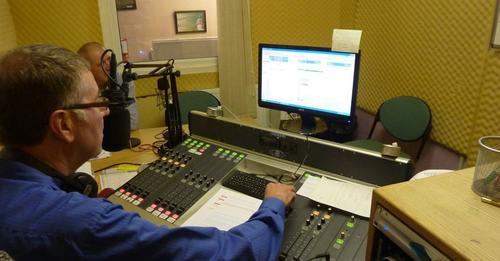
Meanwhile, don´t forget that our our friends at Hot Biscuits Jazz will this week broadcast a feature on South African Jazz from the 60’s & 70’s with Gary Heywood-Everett It features music including Abdullah Ibrahim, Blue Notes and Jabula to name just three of 8 tracks. If this sounds interesting then share it with your friends. Join us on Wednesday, or Thursday at 9pm, (GMT) or late Saturday at 11pm (GMT) at www.fc-radio.co.uk For archives of my past shows go to www.mixcloud.com/stevebewick

The prime sources for this article were found on line at wikipeadia
In our occasional re-postings Sidetracks And Detours are confident that we are not only sharing with our readers excellent articles written by experts but are also pointing to informed and informative sites readers will re-visit time and again. Of course, we feel sure our readers will also return to our daily not-for-profit blog knowing that we seek to provide core original material whilst sometimes spotlighting the best pieces from elsewhere, as we engage with genres and practitioners along all the sidetracks & detours we take.
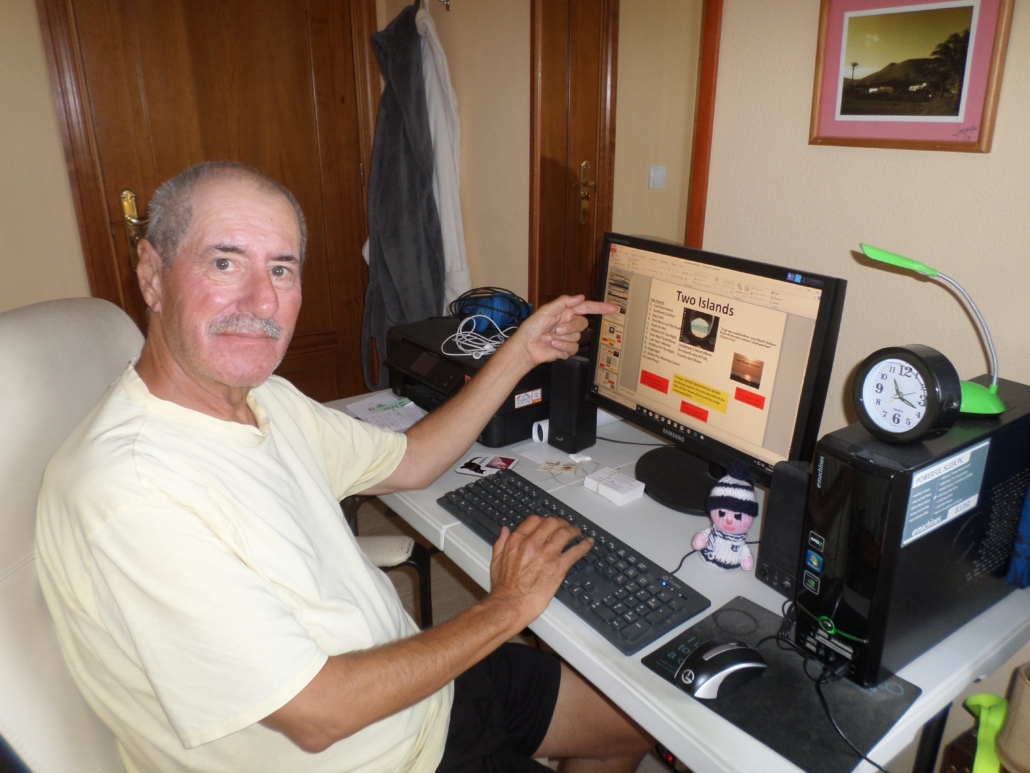
This article was collated by Norman Warwick (right), a weekly columnist with Lanzarote Information and owner and editor of this daily blog at Sidetracks And Detours.
Norman has also been a long serving broadcaster, co-presenting the weekly all across the arts programme on Crescent Community Radio for many years with Steve, and his own show on Sherwood Community Radio. He has been a regular guest on BBC Radio Manchester, BBC Radio Lancashire, BBC Radio Merseyside and BBC Radio 4.
As a published author and poet he was a founder member of Lendanear Music, with Colin Lever and Just Poets with Pam McKee, Touchstones Creative Writing Group (where he was creative writing facilitator for a number of years) with Val Chadwick and all across the arts with Robin Parker.
From Monday to Friday, you will find a daily post here at Sidetracks And Detours and, should you be looking for good reading, over the weekend you can visit our massive but easy to navigate archives of over 500 articles.

The purpose of this daily not-for-profit blog is to deliver news, previews, interviews and reviews from all across the arts to die-hard fans and non- traditional audiences around the world. We are therefore always delighted to receive your own articles here at Sidetracks And Detours. So if you have a favourite artist, event, or venue that you would like to tell us more about just drop a Word document attachment to me at normanwarwick55@gmail.com with a couple of appropriate photographs in a zip folder if you wish. Beiung a not-for-profit organisation we unfortunately cannot pay you but we will always fully attribute any pieces we publish. You therefore might also. like to include a brief autobiography and photograph of yourself
in your submission. We look forward to hearing from you.
Sidetracks And Detours is seeking to join the synergy of organisations that support the arts of whatever genre. We are therefore grateful to all those share information to reach as wide and diverse an audience as possible.
correspondents Michael Higgins
Steve Bewick
Gary Heywood Everett
Steve Cooke
Susana Fondon
Graham Marshall
Peter Pearson
Hot Biscuits Jazz Radio www.fc-radio.co.uk
AllMusic https://www.allmusic.com
feedspot https://www.feedspot.com/?_src=folder
Jazz In Reading https://www.jazzinreading.com
Jazziz https://www.jazziz.com
Ribble Valley Jazz & Blues https://rvjazzandblues.co.uk
Rob Adams Music That´s Going Places
Lanzarote Information https://lanzaroteinformation.co.uk
all across the arts www.allacrossthearts.co.uk
Rochdale Music Society rochdalemusicsociety.org
Lendanear www.lendanearmusic
Agenda Cultura Lanzarote
Larry Yaskiel – writer
The Lanzarote Art Gallery https://lanzaroteartgallery.com
Goodreads https://www.goodreads.
groundup music HOME | GroundUP Music
Maverick https://maverick-country.com
Joni Mitchell newsletter
passenger newsletter
paste mail ins
sheku kanneh mason newsletter
songfacts en.wikipedia.org/wiki/SongFacts




Leave a Reply
Want to join the discussion?Feel free to contribute!